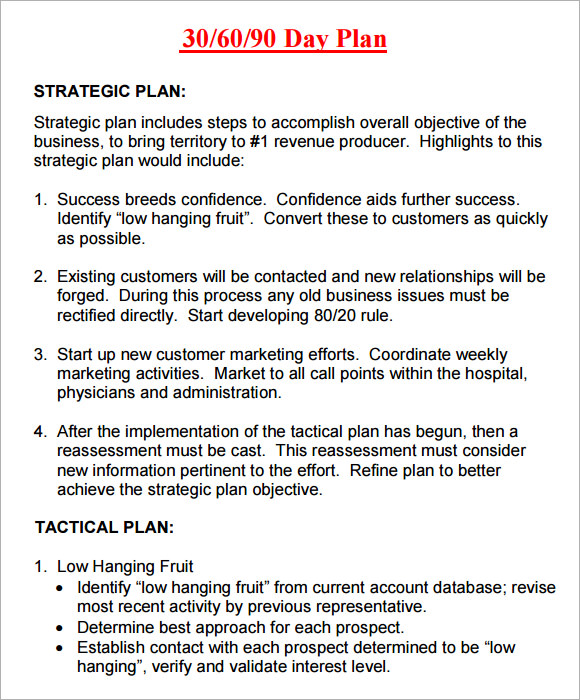

For each phase, set goals that ladder up to your stated focus and priorities. Setting goals is all about making a plan for how you’ll achieve your overarching priorities. Your priorities should be more specific than your focuses, but broader than individual goals. For instance, your priorities for different phases could include learning internal processes, performing your role independently, or proposing solutions to a problem facing the company. Within those broad monthly buckets, outline your high-level priorities for each phase. Your specific monthly focus might change based on your role and the company, however. Typically, the first month of a new job is about learning, the second is about planning and beginning to contribute, and the third is about execution and-when applicable-initiating changes to the status quo. Our 30-60-90 day plan template has all these items laid out for you. Make concrete goals that support those priorities.As the name suggests, you want to think of your plan in 30-, 60-, and 90-day chunks.

If there are things you’re unsure about-like goals, expectations, or typical benchmarks-ask! You’ll likely impress your new colleagues with how proactive you are, but more importantly, you’ll gather the information you need to be successful.īefore you’re ready to get down to the details of your 30-60-90 plan, you’ll want to think about the high-level elements it needs to include. If you’ve already started the position, you’ll have access to internal resources and your new coworkers, which will make it easier to create a detailed, realistic plan. “Come up with a couple things you can accomplish successfully.” “If you come in without a game plan and try to tackle everything, you’re going to get nothing done,” Kaplan says. In either case, the goal is to set yourself up to hit the ground running-and to be sure you’re running in the right direction. If you’re starting a new job, your new manager may explicitly ask for a 30-60-90 day plan, or you may want to create one for yourself to help ease the transition to your new role. You want to convey: “I’ve got five good ideas, and when you hire me, I’ve got 50 more,” says career coach Eliot Kaplan, who spent 18 years as Vice President of Talent Acquisition at Hearst Magazines. Creating a 30-60-90 day plan to present is a great way to show the hiring manager that you understand the challenges a company or department is facing and you have a clear plan for tackling them.īe sure to include a few specific ideas in your interview presentation-depending on the role you’re interviewing for, that could be suggestions for ways to cut costs, increase sales, or improve customer satisfaction. In other cases-more commonly for higher-level management or executive roles-you may be asked to do an interview presentation. “By talking about how you would approach your first 90 days, you demonstrate agility and proactiveness.” “Employers are looking for people who are agile and proactive,” says leadership consultant Michael Watkins, author of The First 90 Days: Proven Strategies for Getting Up to Speed Faster and Smarter. They want to know: Do you understand the role and what it would require of you? Can you get up to speed quickly and start contributing early on? Do your ideas show that you’re the right candidate to fill this particular position?Įven if you’re not explicitly asked this interview question, coming prepared with a plan can help you wow the hiring manager and stand out among other applicants. With a question like this, the interviewer is likely trying to understand your thought process going into the job more than anything. If you’ve made it to a late-stage job interview, you may be asked something along the lines of, “What would your first 30, 60, or 90 days look like in this role?” It’s a good idea to prepare to answer this regardless of what level role you’re interviewing for, but it’s more common for higher-level positions. Making a 30-60-90 Day Plan for an Interview Note: If you’re a manager who wants to make an onboarding plan to help your new hires hit the ground running (without constantly having to ask you what they should do next), you should consider using our self-onboarding tool, a template for outlining your month-one goals for a new hire, as well as creating a week-by-week plan with a thorough list of meetings, readings, and tasks they should tackle in their first month on the job. There are two main times when you might make one: preparing for an interview or starting a new job. Many 30-60-90 day plans follow a similar structure, but the level of detail may vary depending on your situation.


 0 kommentar(er)
0 kommentar(er)
